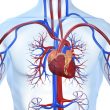Patients with severe aortic stenosis undergoing transcatheter aortic valve replacement (TAVR) can safely undergo the procedure under conscious sedation. Conscious sedation has been adopted in clinical practice as a natural way of simplifying and conducting the procedure in the least invasive way possible. Currently, up to 50% of patients undergo TAVR under conscious sedation, but...
TCT 2020 | Fewer Symptoms and Events when Optimizing with iFR
Symptomatic patients undergoing PCI with no residual ischemia confirmed by iFR have superior symptom improvement at one year vs. patients who did not receive the optimization. In addition to symptoms, patients receiving iFR optimization (final value ≥ 0.95) presented lower cardiac mortality, spontaneous MI or clinically justified revascularization vs. patients with <0.95 final value. ...
TCT 2020 | The Myth of Biodegradable Polymers Seems to Have Come to an End
This is the largest and newest study to compare drug eluting stents with durable polymers vs. biodegradable or bioresorbable polymers. As is usually the case, the theory clashes with reality. The study has shown that the polymer does not seem to play an important role in the performance of drug eluting stents, or at least...
Further Evidence in Favor of Non-Invasive Vasospasm Diagnosis
Non-invasive coronary vasospasm diagnosis by means of echocardiography with the administration of ergonovine can be performed safely; even without prior angiography to rule out fixed lesions. These data are encouraging and move patients with vessel spasm but without significant lesions away from multiple angiographies and from the uncertainty of a diagnosis “by exclusion.” This work...
Complex PCI: Complex Characteristics Impact Results
Patients with a bigger number of complex anatomical characteristics that increase PCI complexity have worse results at one-year followup. These data come from a large multicenter study (e-Ultimaster) recently published in EuroIntervention. The more complex the characteristics, the greater the increase in events. It is important to see past the obvious anatomical challenges (bifurcations, calcification,...
Watch again our Webinar on Selected Topics in Hemodynamics II
Watch again our Webinar on “Selected Topics in Hemodynamics II” on our Youtube account. We are interested in your opinion. Please, leave your comments, thoughts, questions, etc., below. They will be most welcome.
Long-Term Cardiovascular Effects of COVID-19
In many places worldwide, the worst part of the pandemic is still to come. Meanwhile, in other areas, the number of cases is rising again. In this context, the long-term effects of COVID-19 are starting to show. Many believe this is not a current issue, but it will definitely be a problem in the future....
The Key We Are Overlooking in Peripheral Vascular Disease
To change the prognosis of peripheral vascular disease patients, a referral for supervised exercise is paramount. This should be a cultural change, not only an individual recommendation. A physically active lifestyle reduces the risk of cardiovascular events and functional impairment in patients with peripheral vascular disease. The novelty of this work (forthcoming in Eur J...
10/10 – SOLACI Webinar: Selected Topics in Hemodynamics II
We are interested in your opinion. Please, leave your comments, thoughts, questions, etc., below. They will be most welcome.
Not All Coronary Spasms Are the Same: Benefits of Acetylcholine
Patients with documented spasm to the coronary arteries present increased risk of myocardial infarction (MI) and repeat angiography, while patients with microvascular spasm are associated to recurrent angina. Globally, the prognosis of all these patients continues to be favourable, even though acetylcholine testing might help distinguish one-another. Coronary spasm shows in up to 60% of...








